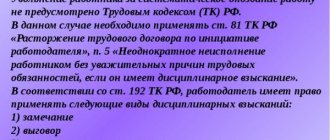Supervision over all judicial bodies and control over their activities is carried out in the highest legal authority. The Supreme Court serves as the main regulator. It deals with civil, criminal, administrative cases and receives appeals and complaints.
What is the Supreme Court?
The composition, functions and powers of the body are determined by the Constitution. According to the law, the Supreme Court is the highest legal authority that performs supervisory functions. It has a special form of control. The Supreme Court is subject exclusively to the Constitution and does not depend on other authorities. It is headed by a chairman who is appointed by members of the Federation Council.
Composition of the Supreme Court
Among the participants in the highest legal authority, several main positions can be distinguished:
- Chairman of the Supreme Court
. Study important issues related to the regulations on the work of the body, form the judiciary, convene and chair the meetings of the Plenum and Presidium. - First Deputy
. Ensures the functioning of judicial panels and carries out instructions from the head of the Supreme Court. - Heads of judicial panels
. Participate in ensuring the work of departments. The chairman of each board may perform the functions of the head of the organization.
History of the Supreme Court
The decision to establish the highest body of justice was made on January 1, 1923. Previously, its functions were performed by the Governing Senate. The concept of what tasks the Supreme Court solves, what it is and the principles of its organization have changed throughout its existence. Immediately after its creation, it considered only cases of special national importance. Then the powers of the Supreme Court expanded; it received the right to cancel and correct decisions of subordinate authorities.
In 1928, a resolution was adopted on the procedure for managing the judiciary. According to it, the independence of the Supreme Court was greatly limited due to its accession to the People's Commissariat of Justice. The body again received the right to make independent decisions only in 1936 after the adoption of the Constitution of the RSFSR. Between 1932 and 1938, many members of the Supreme Court, including its head, were subject to repression.
The updated Constitution, introduced in 1977, expanded the powers of the authority. The jurisdiction of the Supreme Court began to include part of the functions of the legislative branch. In 1993, complete independence of the judicial system was proclaimed. The Supreme Court became an active participant in the reform to expand the rights and freedoms of citizens. Now he is engaged not only in studying high-profile cases and challenging decisions, but also takes part in the development and improvement of legal proceedings.
What does the Supreme Court do?
The highest court examines many issues. The competence of the Supreme Court includes several components:
- Control over the work of local, district and magistrate courts, including military ones.
- Sometimes the Supreme Court takes on the functions of the first instance when it comes to high-profile or high-profile events.
- Review of cases in connection with filing a complaint. The Supreme Court has the power to overturn a decision of a subordinate court if the plaintiff files an appeal.
- Review of sentences in connection with the identification of new circumstances.
- Study and systematization of judicial practice.
- Analysis of judicial statistics and issuance of explanations on certain issues related to law enforcement.
- Resolving some issues related to international law.
Powers of the Supreme Court
The highest legal authority, in accordance with the norms of the Constitution, has the right:
- Return cases for reconsideration if new circumstances have been identified.
- Make decisions on large and important cases that are of great importance for judicial practice.
- Request clarification from the Constitutional Court of the main provisions of the fundamental law.
- Check sentences passed by magistrates' and district courts and overturn them if they do not comply with legal standards.
- Explain legal provisions and their use. For this purpose, a meeting of the Supreme Court is held, at which the main provisions are developed. They do not have the status of legislative acts, but are mandatory for execution.
Features of the Supreme Court
The highest judicial institution has several distinctive characteristics compared to other legal authorities:
- The decision of the Supreme Court can only be appealed to international legal authorities.
- The decisions and clarifications of the Supreme Court have binding force in the authorities subordinate to it.
- Only the Federation Council can appoint a chairman.
- If a criminal case is initiated against a deputy or member of the Federation Council, only the Supreme Court has the right to consider it.
Structure of the Supreme Court
The institution consists of the following divisions:
- Plenum of the Supreme Court
. Includes 170 people. The plenum is a meeting of judges who do not participate in making decisions, but deal with the application of judicial practice. The body issues clarifications and procedures for applying legislative norms. To make decisions, a collegium is convened and takes part in the meetings. - Presidium of the Supreme Court
. Includes the head and his deputies - a total of 13 people. The Presidium is engaged in systematization of judicial norms, resolves issues related to legal proceedings in the subjects of the state, and provides advice on the application of the law. - Board of Appeal
. Returns cases for review if a complaint is filed. Its participants consider cassation, supervisory and appeal appeals. The division is divided into several judicial panels, which differ in the types of cases studied. - Judicial panels
. These are several divisions that consider appeals and cassation complaints filed by parties who disagree with the decision of the lower authority. Collegiums are distinguished depending on the type of cases being studied: civil, criminal, economic, military, administrative. - Disciplinary Board
. Examines cases related to the early deprivation of judges of their powers due to misconduct. It consists of 6 people. Members of the disciplinary board are elected for 3 years by secret ballot. - Other departments
. The Supreme Court has the right to create additional structural departments responsible for ensuring its functioning.
Composition of the Supreme Court
Among the participants in the highest legal authority, several main positions can be distinguished:
- Chairman of the Supreme Court
. Study important issues related to the regulations on the work of the body, form the judiciary, convene and chair the meetings of the Plenum and Presidium. - First Deputy
. Ensures the functioning of judicial panels and carries out instructions from the head of the Supreme Court. - Heads of judicial panels
. Participate in ensuring the work of departments. The chairman of each board may perform the functions of the head of the organization.
Appointment to the position of judges of the Supreme Court
The functions of the legal authority are regulated by the norms of the Constitution. Since the Supreme Court is an independent institution, only the Federation Council has the right to appoint its members. The procedure is carried out on the basis of a proposal from the president. The chairman can recommend a judge for appointment. Removal from office is carried out on the basis of a decision of the Federation Council.
Powers of the Supreme Court
The highest legal authority, in accordance with the norms of the Constitution, has the right:
- Return cases for reconsideration if new circumstances have been identified.
- Make decisions on large and important cases that are of great importance for judicial practice.
- Request clarification from the Constitutional Court of the main provisions of the fundamental law.
- Check sentences passed by magistrates' and district courts and overturn them if they do not comply with legal standards.
- Explain legal provisions and their use. For this purpose, a meeting of the Supreme Court is held, at which the main provisions are developed. They do not have the status of legislative acts, but are mandatory for execution.
Constitutional Court and Supreme Court - differences
The two legal bodies differ in their functions and specifics of work. Acts of the Supreme Court are drawn up in relation to any cases: civil or criminal. The authority controls the work of the entire judicial system. The function of the Constitutional Court is to verify the compliance of any documents with the provisions of the fundamental law of the state. The main task of this body is to preserve the integrity of the legal system and eliminate contradictions in the interpretation of the Constitution.
Board of Appeal
Appeal proceedings involve checking the correctness of court decisions. At the same time, the board has the right not only to cancel them, but also to change them. The appeal panel of the Supreme Court includes 10 judges, its chairman and deputy chairman.
The following cases are considered at the meeting:
- judicial panels of the Supreme Court;
- due to newly discovered or new circumstances.
The Collegium has the authority to appeal to the Constitutional Court of the Russian Federation with questions regarding the conformity of the laws applied in the case with the Constitution. The chairman informs the presidium and plenum of the Supreme Court of the Russian Federation about the activities of the board.
The powers of the Supreme Court allow it to exercise oversight over all parts of the common law judicial system, ensuring maximum compliance and application of constitutional laws. This significantly reduces errors in legal proceedings and enables citizens and authorities to achieve justice.
How to appeal to the Supreme Court?
Before submitting an application or complaint to the highest legal authority, it is necessary to go through all lower authorities. Only after this is participation in the Supreme Court allowed. To apply you need:
- Generate the text of the complaint. It must contain information about the plaintiff and defendant, information about violated rights, information about all stages of the consideration of the case, including pre-trial settlement.
- Attach supporting documents to the application. This may be copies of decisions of courts of general jurisdiction, evidence of the plaintiff’s innocence.
- Pay the state fee. The receipt must be attached to the package of documents.
- Send the complaint with a set of documents by mail or hand over the papers to the reception of the Supreme Court. You can also submit an application electronically using the State Services portal.
- The period for filing a complaint is 3 months. from the date of the last court decision.
Procedure for consideration of cases in the Supreme Court
The rules for accepting submitted complaints and applications are strictly formalized. The official Supreme Court examines documents as follows:
- If the Supreme Court acts as the first body to study the case, a panel of 3 people takes part in the meeting. Juries may additionally be used to make decisions in criminal matters. Administrative offenses are considered by one judge.
- If there is a cassation or supervisory appeal, a panel of 3 judges is convened.
- Persons related to the case under consideration are notified of the procedure and time of the meeting. In this case, failure to appear is not an obstacle to making a decision.
- Based on the results of the consideration of the case, the judge makes a decision to satisfy the plaintiff’s demands or to refuse.
Supreme Court ruling
One of the functions of the highest legal authority is to clarify issues related to the use of judicial practice. For this purpose, a resolution is used, which, although not a source of law, is mandatory for execution by lower authorities. The document is issued by the Plenum and contains the main provisions regarding the use of legislative norms.
The Supreme Court issues rulings and decisions. The first document is common to subordinate bodies. Unlike a ruling, a Supreme Court decision contains information specific to a single case at hand. In itself, it does not serve as a basis for sentencing by other judges. If the rules need to be extended to all subordinate courts, it is necessary to convene a meeting and make a decision.
Structure of the Supreme Court
The institution consists of the following divisions:
- Plenum of the Supreme Court
. Includes 170 people. The plenum is a meeting of judges who do not participate in making decisions, but deal with the application of judicial practice. The body issues clarifications and procedures for applying legislative norms. To make decisions, a collegium is convened and takes part in the meetings. - Presidium of the Supreme Court
. Includes the head and his deputies - a total of 13 people. The Presidium is engaged in systematization of judicial norms, resolves issues related to legal proceedings in the subjects of the state, and provides advice on the application of the law. - Board of Appeal
. Returns cases for review if a complaint is filed. Its participants consider cassation, supervisory and appeal appeals. The division is divided into several judicial panels, which differ in the types of cases studied. - Judicial panels
. These are several divisions that consider appeals and cassation complaints filed by parties who disagree with the decision of the lower authority. Collegiums are distinguished depending on the type of cases being studied: civil, criminal, economic, military, administrative. - Disciplinary Board
. Examines cases related to the early deprivation of judges of their powers due to misconduct. It consists of 6 people. Members of the disciplinary board are elected for 3 years by secret ballot. - Other departments
. The Supreme Court has the right to create additional structural departments responsible for ensuring its functioning.
Appealing the decision of the Supreme Court
The highest judicial body, although it is the main legal authority, reserves the right of challenge to citizens. The position of the Supreme Court in relation to cases considered by it can be appealed as follows:
- If the plaintiff does not agree with the decision of the Supreme Court of one of the subjects of the state - a territory, region or republic, he can file a complaint with the main authority of the country.
- If the case has already been considered by the Supreme Court of the state and the decision was not in favor of the plaintiff, a complaint should be filed with the chairman. He has the right to overturn the decision of any judge on one of the panels.
- If, when filing a complaint with the chairman, the decision in the case was left unchanged, you must contact the European Court of Human Rights.
- You can appeal the decision of the Supreme Court within 30 days from the date of its adoption. If the deadline has been missed, the interested party may file a petition for its extension.







